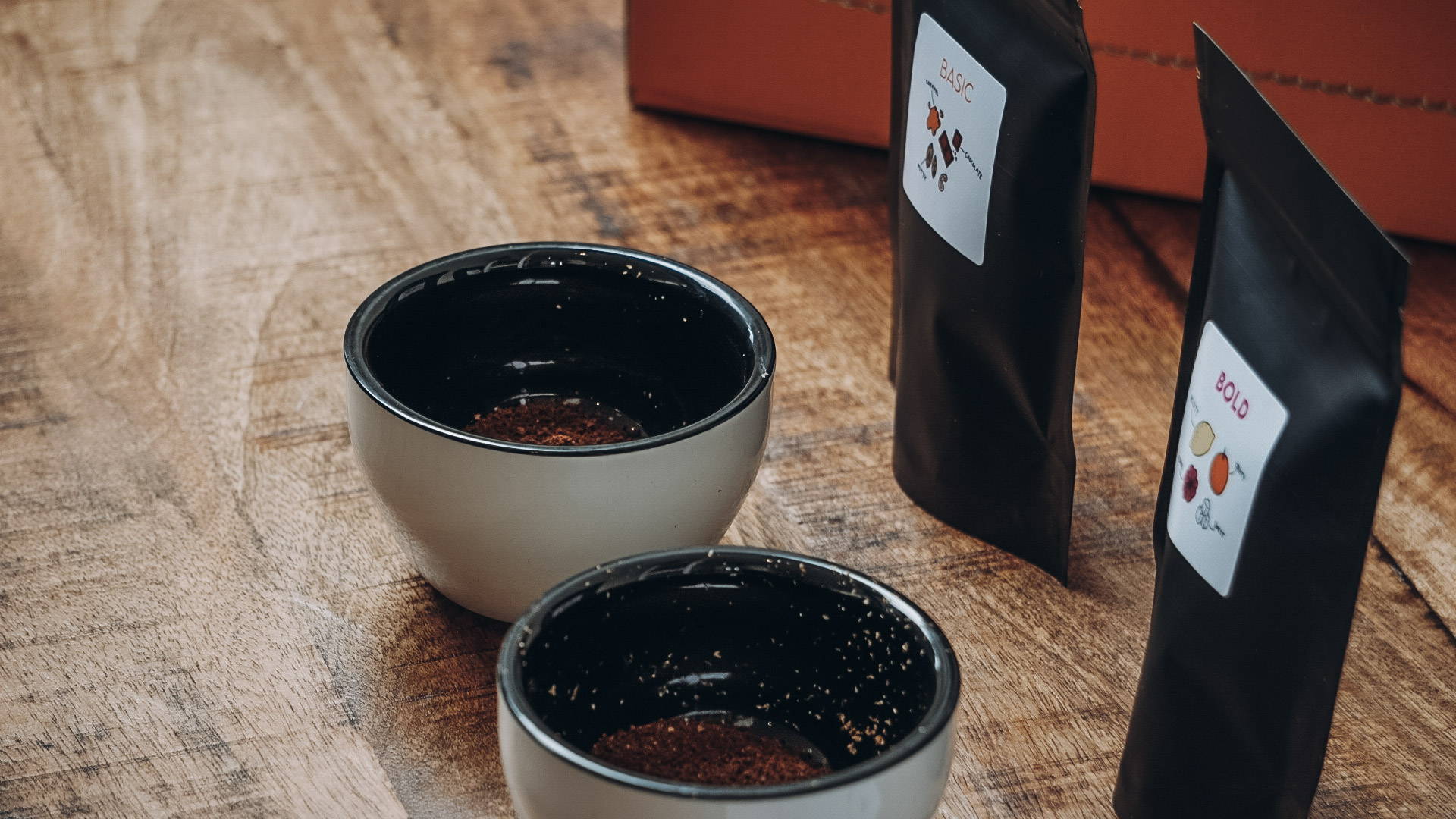How to Cup Coffee from Home
Share
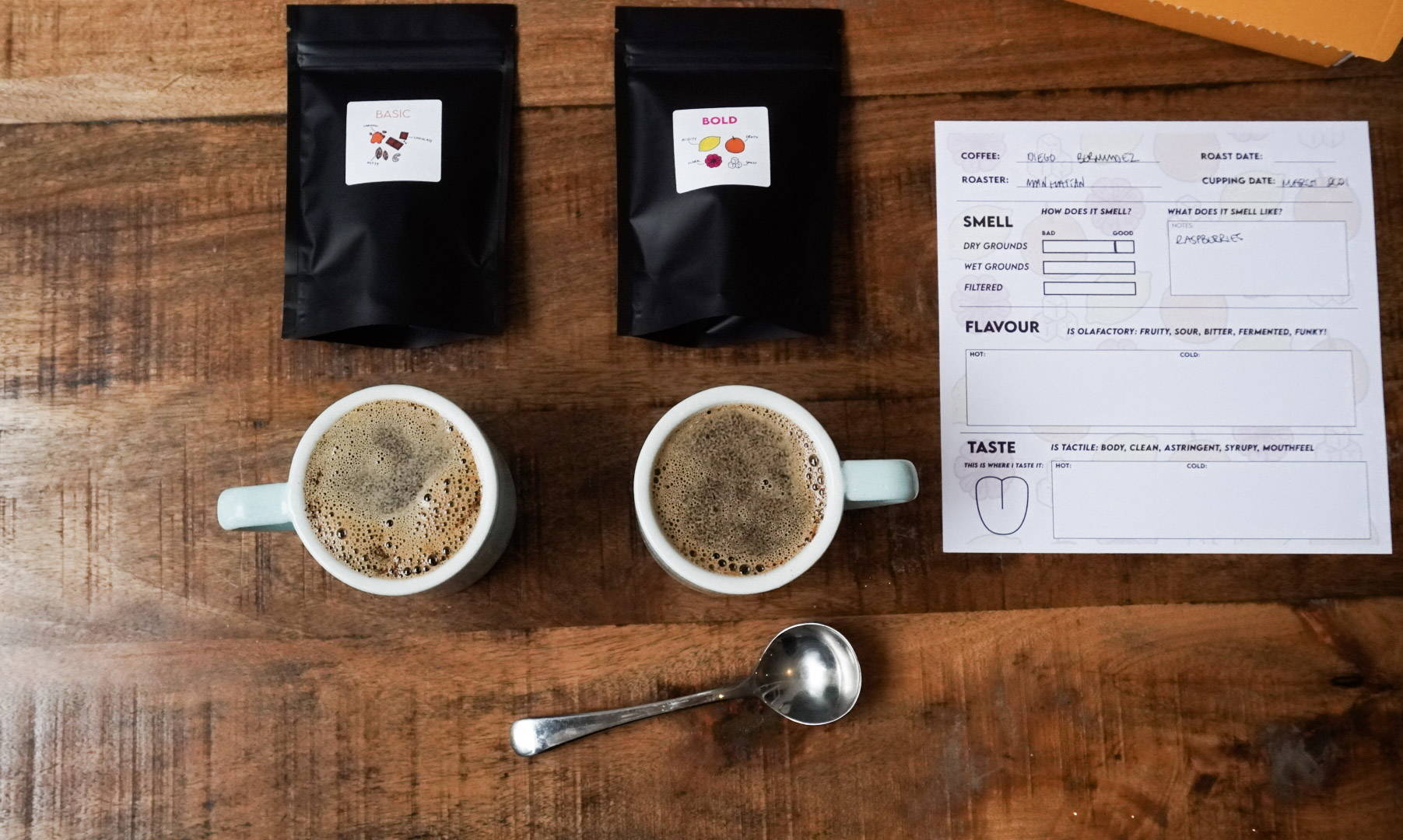
In this blog, we’ll teach you the fundamentals of tasting and cupping coffee so you can explore your coffee's taste profiles just like the experts do.
Not only can cupping help improve your palette, but it also makes for a great activity to share with coffee-loving pals!
***
"Coffee is more than just a drink: It’s a culture, an economy, an art, a science — and a passion. Whether you're new to the brew or an espresso expert, whether you prefer it with or without caffeine, there's always more to learn about one of our favourite drinks." - National Coffee Association
What is 'cupping' and why do we do it?
As many of us know, there are many variables that come into play when we brew coffee from home, such as dosage, grind size, water temperature, brew method, paper type, extraction time etc.
Cupping coffee is the practice of brewing multiple types of coffee in the exact same way. This consistency allows you to evaluate the taste, aroma and quality of your coffee in a controlled environment so you can assess how each coffee tastes.
Most people that cup coffee do so for quality control purposes, such as farmers, roasters and cafe owners. However, anyone can cup coffee and compare and contrast the different taste notes - the trick is knowing how!
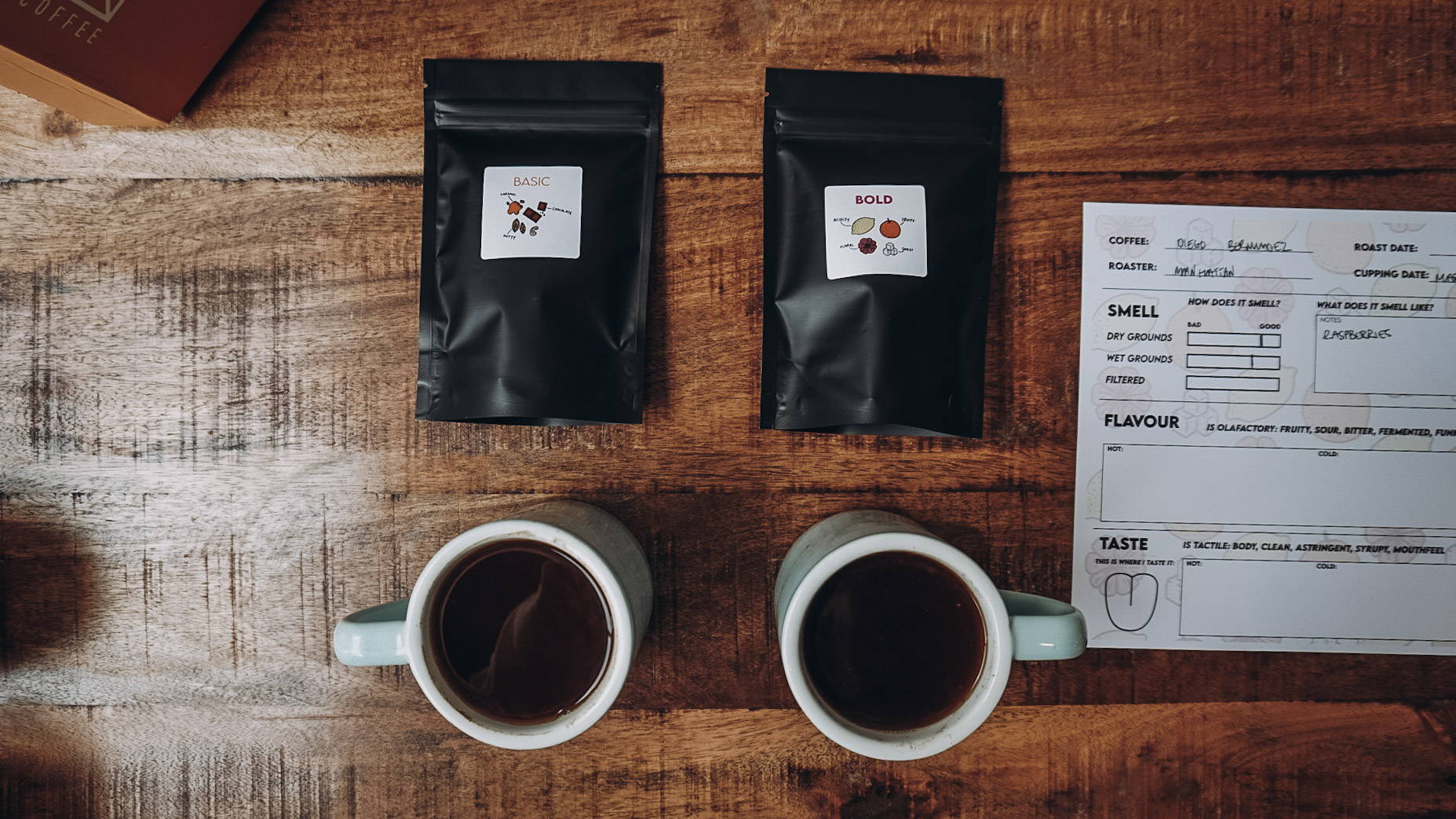
What affects coffee’s taste?
The taste of our coffee isn't determined solely by how much or little we use to brew. In fact, there are many variables that contribute to how our coffee tastes before we start to brew, including:
Origins & Growing Conditions
The main differences in coffee's flavour is specific to the region they’re from. Broadly, the 3 main coffee growing regions are Africa, America and Asia.
Processing
Coffee processing is the act of converting the coffee plant's raw fruit into the finished coffee bean. There are many different ways to process coffee and the list gets longer and longer with each day as more coffee farmers begin to experiment with non-traditional process methods!
One of the most common processes is Washed, in which the coffee undergoes an intentional fermentation phase using water, which often results in flavor profiles such as clean, well-balanced, complex, pronounced acidity, silky, delicate, tea-like body, featuring a wide range of taste notes from starfruit tartness to deep, dark chocolate.
One of the most common processes is Washed, in which the coffee undergoes an intentional fermentation phase using water, which often results in flavor profiles such as clean, well-balanced, complex, pronounced acidity, silky, delicate, tea-like body, featuring a wide range of taste notes from starfruit tartness to deep, dark chocolate.
Another common processing method is Natural, in which the fruit remains on the bean and dries undisturbed. Common flavor profiles include bold, fruity flavors inherited from the coffee cherry, pulp and skin, generally producing a heavier-bodied cup. Usually tastes 'not like coffee' as some might say - expect funk in your cup but in an excellent way!
Coffee varietals
The varietal is essentially the species of the coffee plant which produced your coffee bean. You may have already heard of the Arabica & Robusta varietals, but other common varietals in speciality coffee include:
SL28: Typically found in Kenya, this varietal often has taste notes of red grape, lemon, berries & blackcurrant.
Heirloom: Usually from Ethiopia, heirloom coffees often have taste notes of black tea, florals, jasmine, lemon and lime.
Geisha: One of the most rare coffee varietals around, geisha coffees can often taste like rosehips, honeysuckle, tangerine, bergamot and lemongrass. Usually found in Panama & Colombia.
Roast profile
The way your coffee is roasted also greatly impacts how your coffee tastes. For example, coffee with a Filter roast will be lighter, cleaner and brighter than most Espresso roast coffees, which tend to be darker and more bitter.
Each of these variables impact the taste of the coffee we brew. We explore them in more detail on our coffee education platform Brew Online!
What you'll need to cup:
Coffees of your choice
We recommend using at least 3 or 4 different coffees so you can compare a wide range of taste profiles.
Cups or mugs of a similar size
You'll need 1x mug per coffee you want to cup.
Cupping spoons or soup spoons
You can get dedicated cupping spoons with a deep base but soup spoons work just as well! We recommend using 2x spoons per coffee used.
Weighing scales
The more accurate your scales, the better the results!
Timer
Your phone will do the trick.
Cupping Cards
Having a scorecard where you can note down the different tastes and aromas you experience is a great way to keep track of how much or little you liked each coffee. You can find a generic cupping scorecard on Google or purchase our Taster Box to get access to our simplified cupping cards.
SCA Flavour Wheel
Originally published in 1995, the Speciality Coffee Association's Flavour Wheel (below) is an invaluable resource for coffee professionals.
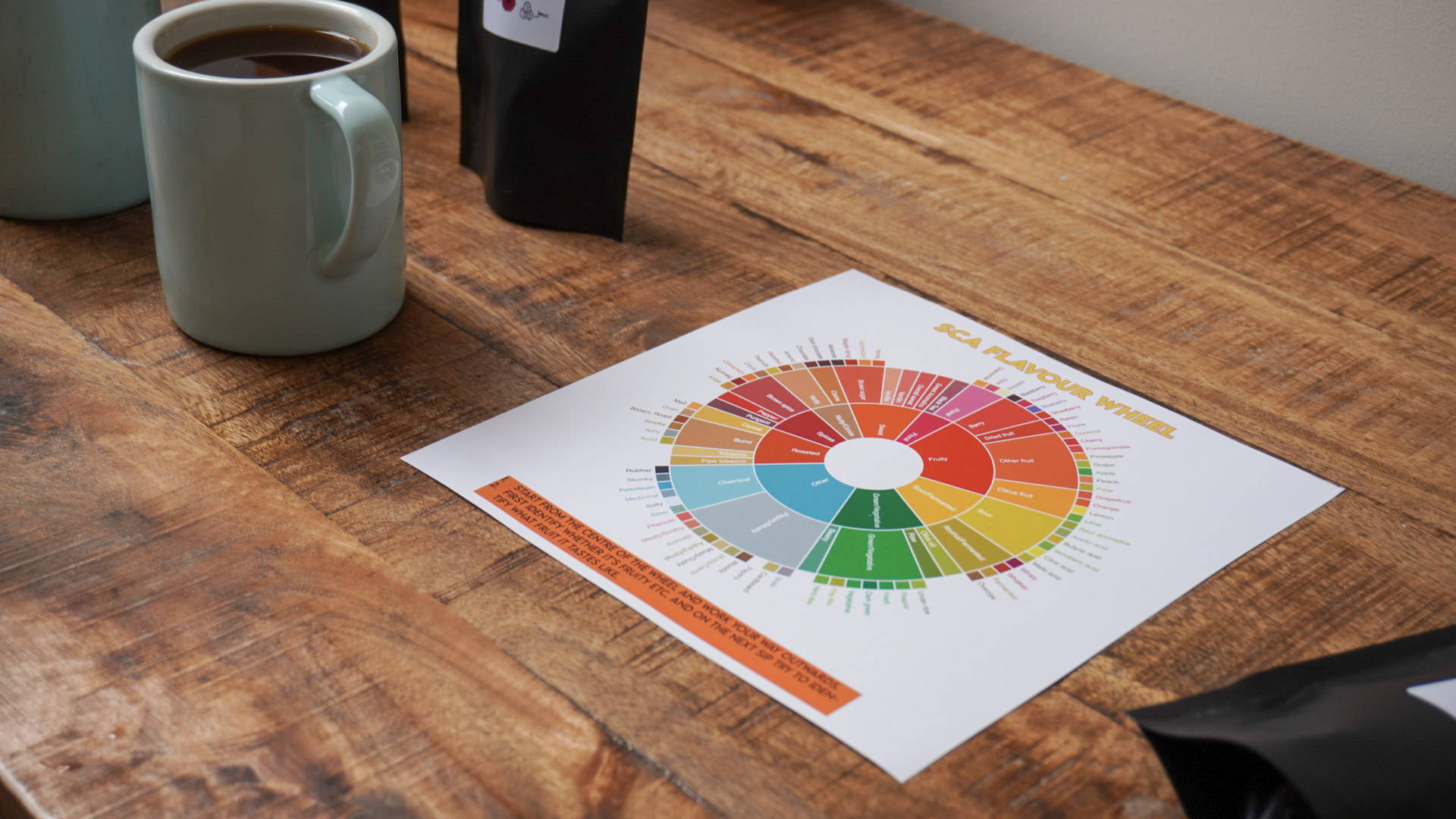
How to Cup Coffee
1. Begin to fill out your scorecards.
Note down the name, origins and process used for each coffee.
2. Boil your water so it is ready when you need to start.
We're going to grind each coffee individually while your kettle is boiling. More below!
3. Weigh out 19 grams of each type of coffee and grind it on a medium/coarse setting similar to sea salt.
For example, if you're using the Wilfa Svart, you should grind all your coffees around the 'O' in 'AEROPRESS'. At this stage you should sniff the dry grounds and write down what you smell on your scorecard!
*TIP* Aroma plays a huge role in how we taste and experience coffee. We find it useful to sniff the clothes we're wearing in between smelling each coffee to help us differentiate between the different aromas.
4. Pour your coffee into each of your mugs/cups.
Be careful not to get them mixed up!
5. Start your timer and add 200g of boiling water into each cup.
Ensure that all the dry grounds are covered and that each cup has the same amount of water.
6. At the 4:00 minute mark, use your spoons to break the crust. Keep the timer running!
Make sure to smell the wet aroma of the coffee and note down any aromas at this point.
7. Once you have broken the crust, you want to remove the 'suds' and floating grounds from the top by swooping your spoons in a circular motion.
Dump this excess into an unused mug!
8. At the 10:00 minute mark we cup!
At this point, you want to scoop some coffee from your first cup and slurp loudly - and we mean loudly! Slurping aggressively in this way aerates the coffee and allows you to pick up on as many of the taste notes as possible.
You want to repeat this process for each coffee, cleaning your spoon in between. With each slurp, try to evaluate each coffee on your cupping sheet, providing as much detail as possible. You'll find more help with this below!
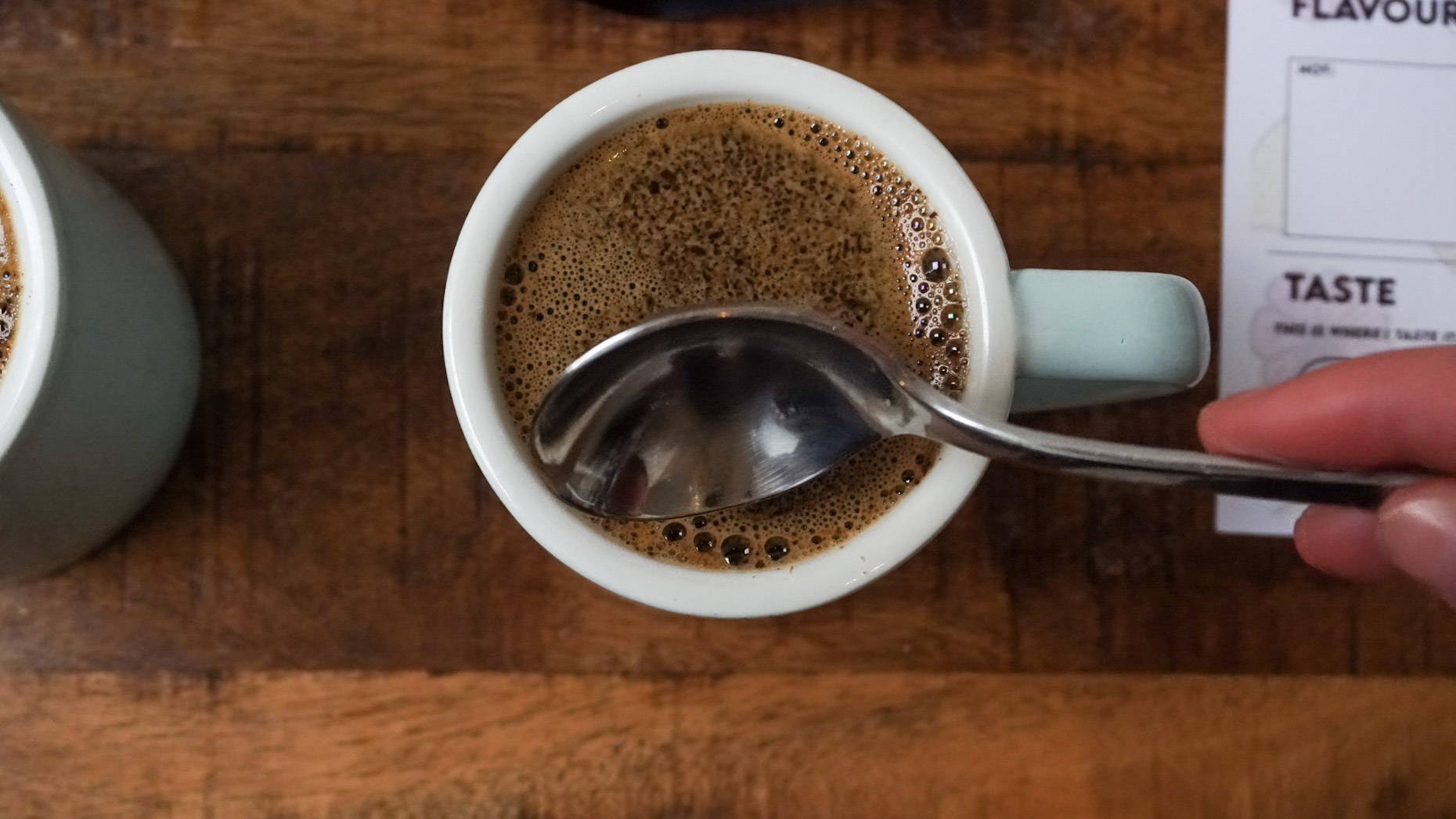
Evaluating your Coffee
There are 5 key things you want to keep in mind when evaluating your coffee: flavour, acidity, aroma, body and finish:
Flavour
Thinking about the flavour is where you try to identify specific tastes. For example, floral, fruit, tobacco, wine, nutty, cocoa, spice and smokey are just a few many ways to identify.
We find that the SCA Flavour Wheel can be a massive help. Simply start by looking at the flavours on the inside of the wheel and work your way outwards to hone in on the more specific taste notes.
But remember: you can often taste so much more than what appears on the flavour wheel. Keep your mind open!
Acidity
Acidity is the brightness that gives coffee life! Look for a sweet tartness and delicate crispness in many great coffees. In general, a dark roasted coffee will be less acidic.
TIP: Acidity is not to be confused with sourness, which can be a coffee defect.
Aroma
What do you smell? Look for subtle bouquet of herbs, fruits, flowers and other smells. Aroma can help you identify freshness and overall quality, and is a sneaky way to identify any defects or off-tastes in the bean.
Body
Body, or mouthfeel, can be thought of as the weight of the coffee (to simplify, think skim milk vs. full fat milk). Is the mouthfeel of your coffee light and silky, heavy and rich, or thick and lifeless?
Finish
What lingers after the coffee is consumed? Great coffees remain on the tongue even after the coffee has been consumed. Look for sweetness and pleasing flavours!
Want to try your own cupping session?!
Our new Taster Boxes come with everything you'll need to have your own cupping session at home, including 4x 100g bags of different coffees, cupping scorecards, the SCA flavour wheel and a step-by-step video showing you EXACTLY what to do!
